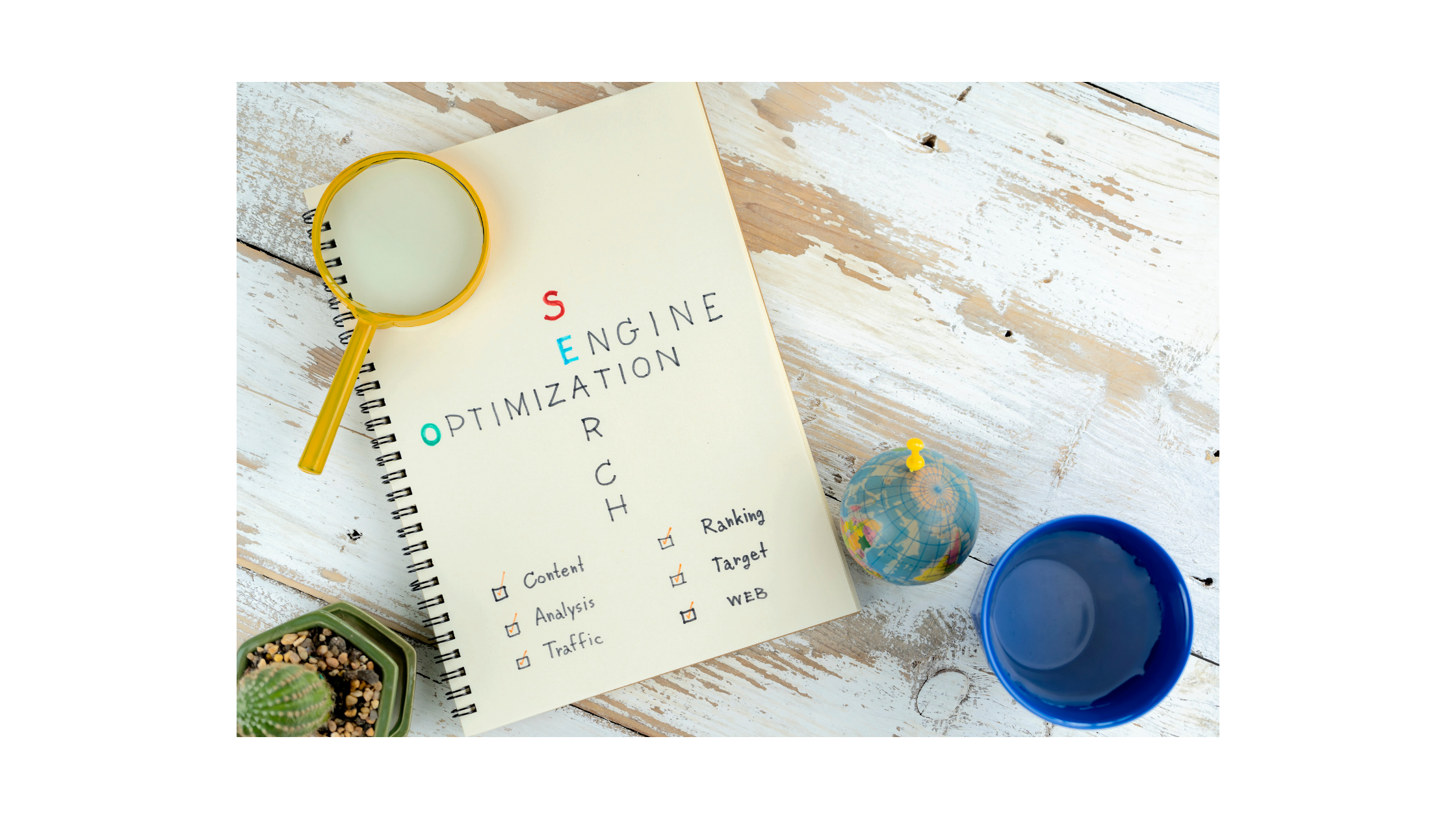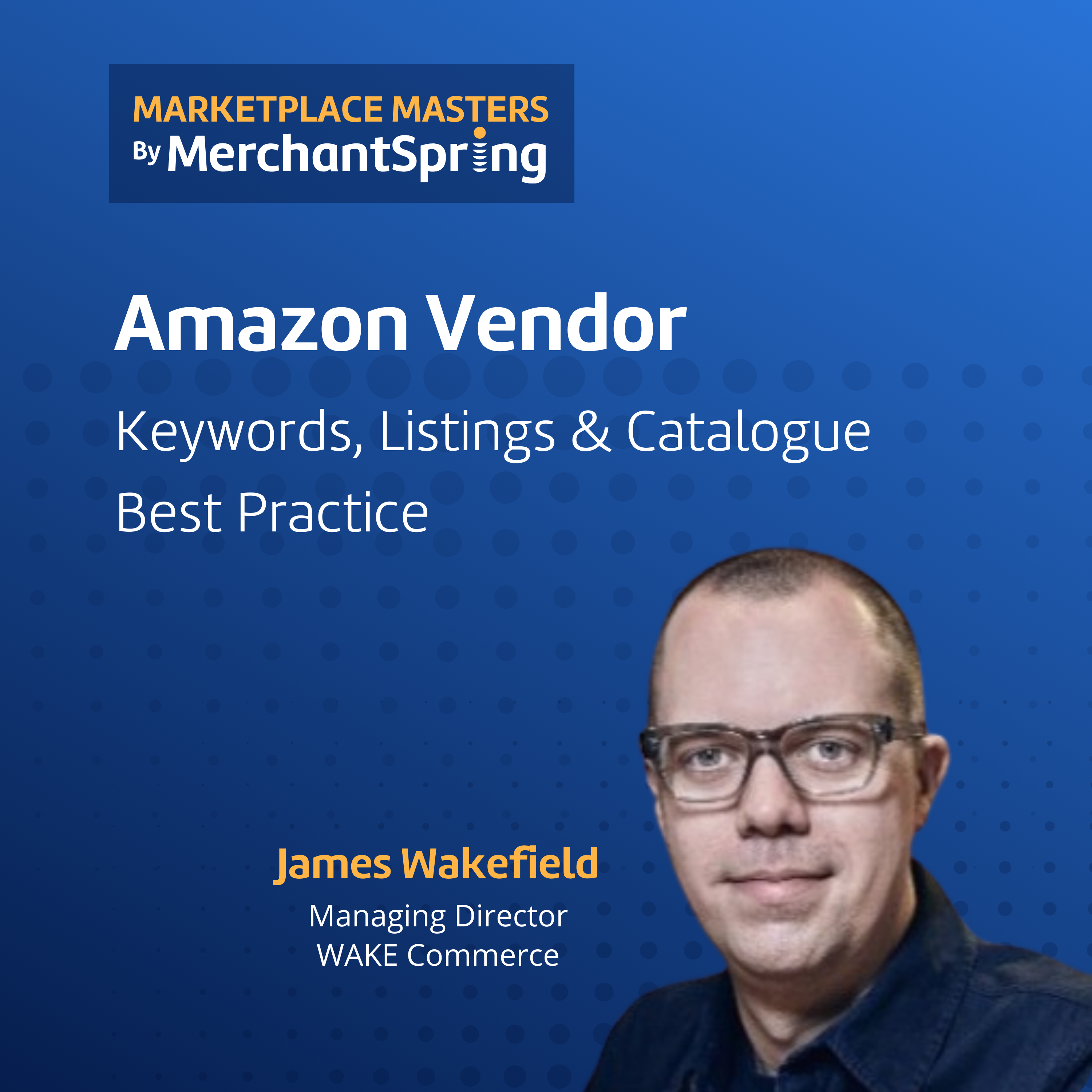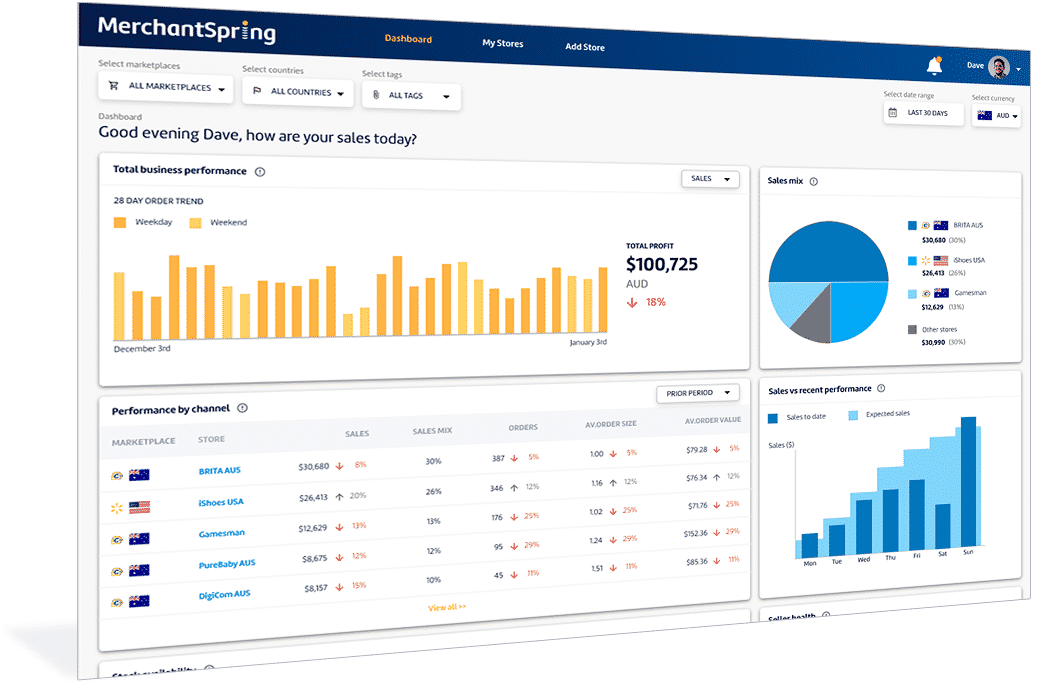Unlocking the Potential of Your Amazon Catalogue: Listing Optimization Strategies
Overview
In this episode, James Wakefield of WAKE Commerce joined Paul Sonneveld and explored how Amazon Vendors can take greater control of their product catalogue on Amazon and grow this channel via high-quality product pages.
Understanding the Importance of Catalogue and Listing Optimization

“I feel that it's an aspect of Amazon and vendor that is kind of underserved. There's a lot of almost mystery behind it and it is multifaceted. It's quite complex.” - James Wakefield, Managing Director, WAKE Commerce
You might be wondering, why is catalogue and listing optimization important for Amazon vendors? Doesn't Amazon take care of everything? Well, the truth is, while Amazon does provide a platform for selling products, it's up to the vendors to optimize their listings to improve visibility, discoverability, and conversion rates. Let's break it down:
Visibility and Ranking
The first step in optimizing your product catalogue is ensuring that your products show up for relevant searches on Amazon. Are your products ranking for specific search terms and keywords that have significant search volume? By optimizing your listings, you can improve your visibility and increase the chances of your products being discovered by potential customers.
Discovery and Brand Integrity
Once your products are visible, the next step is to ensure that they are getting the attention they deserve. Are your priority products receiving the spotlight they need, or are there duplicate or illegitimate listings causing confusion? It's essential to understand if your products are standing out among the competition and if your brand integrity is reflected in your listings.
Content and Conversion
When shoppers land on your product listings, it's crucial to provide them with a high-quality experience. Is your content informative, engaging, and reflective of your brand? Are you addressing customer questions and concerns effectively? Additionally, factors like shipping options, price competitiveness, and customer reviews play a significant role in driving conversions. Optimizing your content and addressing these factors can greatly improve your conversion rates.
Quantifying the Opportunity
“So, in terms of quantify, we really need to define the current state of your account. Which means understanding what type of vendor or seller you are on Amazon, what stage you're at in terms of your Amazon Journey, or even maturity and this is really fundamental to defining your strategy. ” - James Wakefield, Managing Director, WAKE Commerce
Three main types
Resellers or Distributors
If you're a reseller or distributor, you might have faced challenges in recent years due to increased competition and a race to the bottom in terms of pricing. You may not have control over your products or brand presence on Amazon.
Private Label Sellers
Private label sellers have more control over their brand and listings. They can focus on optimizing their products without direct competition from their own brand.
Mainstream Consumer Brands
Mainstream consumer brands, often found on Vendor Central, may have joined the Amazon party a bit late. They might face challenges in taking ownership of their brand presence on the platform due to existing reseller listings. However, they also have the opportunity to leverage insights from reseller activity.
By understanding your position and conducting a thorough audit of your listings, you can identify the products with the most potential and prioritize your optimization efforts.
The Optimization Process

Now that we've discussed the importance of catalogue and listing optimization, let's dive into the practical aspects of the optimization process. James, the speaker discussed a comprehensive approach to ensure that your listings are optimized for success on Amazon. Here's a breakdown of the process:
1. Audit and Analysis
We start by conducting a thorough audit of your current listings. This involves analyzing Amazon data, including sales rank, review quantity, and other metrics, to understand the current situation with your brand's products. We also consider external factors such as market share, category analysis, and search volumes to gain insights into your competition and identify opportunities.
2. Content Optimization
Once we have a clear understanding of your current listings and the competitive landscape, we focus on optimizing your content. This includes improving your titles, bullet points, and product descriptions to incorporate relevant keywords and engage customers effectively. We also pay attention to visual assets, ensuring that your imagery and variations are optimized for maximum impact.
3. Monitoring and Performance Measurement
Optimization is an ongoing process, and we emphasize the importance of monitoring your listings and measuring their performance. This involves regularly checking availability, monitoring the buy box, and analyzing market share and keyword rankings. By closely monitoring your listings, you can identify any issues or opportunities for improvement and make data-driven decisions to drive success.
Conclusion
In conclusion, mastering product catalogue strategies and listing optimization is crucial for Amazon vendors looking to improve their performance on the platform. By optimizing your listings, you can enhance visibility, increase discoverability, and improve conversion rates. Remember to quantify the opportunity, conduct a thorough audit, and focus on content optimization. Regular monitoring and performance measurement are essential to ensure ongoing success.















Add a Comment